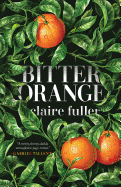
| Publisher: | Tin House | |
| Genre: | Psychological, Friendship, Crime, Literary, Fiction | |
| ISBN: | 9781947793156 | |
| Pub Date: | October 2018 | |
| Price: | $25.95 |
| Starred | Fiction |
by Claire Fuller
Bitter Orange, Claire Fuller's follow-up to Swimming Lessons (2017), details the life of a woman obsessed with the young couple she lives above. It's 1969, and for the first time, Frances is leading a life independent of her mother. She's come to Lyntons, an old British country house, to study the gardens, but is distracted by Peter and Cara, who seem to be just as infatuated with her as she is with them. The three drink, eat and lounge the summer away together, but soon their relationships turn stale. Frances can tell they are lying about something, but she cannot remove herself from their gravitational pull, nor can she tell them any of her own secrets, including the peephole she uses to spy on their most intimate moments.
Atmospheric and intoxicating, Bitter Orange is a slow-burn mystery/horror novel that cannot soon be forgotten. Hot, sticky and sexy, Frances's first-person narration eroticizes even the most mundane interactions with Peter and Cara. Fuller's prose shines as she hovers over the palpable small pleasures, detailing the taste of a cigarette, a flash of bare skin. Nevertheless, she keeps sight of the novel's larger plot, which occasionally and abruptly erupts from a languid summer haze. While the premise feels familiar, it is this very familiarity that gives the book its sense of the uncanny. The reader has seen this set-up before but cannot shake the foreboding nature of the frame story as Frances reminisces from her deathbed. Exquisitely written and carefully paced, Bitter Orange imbues the dis-ease and sickening sweetness of old-fashioned literary horror with a new, modern flare. --Alice Martin, freelance writer and editor
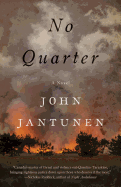
| Publisher: | ECW Press | |
| Genre: | Small Town & Rural, Mystery & Detective, General, Literary, Fiction | |
| ISBN: | 9781770412057 | |
| Pub Date: | November 2018 | |
| Price: | $16 |
| Fiction |
by John Jantunen
In Tildon, Ontario, a prime vacation spot for Canada's wealthy, a businessman is discovered dead inside a flaming car. Following this horrific act, Deacon Riis, the town's only journalist, finds himself at the center of a strange conspiracy literally to light the town on fire. As other members of the town are caught up in the increasing violence and depravity, Deacon discovers that the acts are all linked to the writings of his foster father, a man whose novels depicted humanity at its most disturbed. No Quarter has the skeleton of a thriller, but author John Jantunen consistently zigs where other narratives would zag, creating a story that is far stranger and disturbing.
No Quarter is meta-textual, to say the least. There are stories within stories, retellings of the characters' lives in the style of George Cleary, whose work is at the heart of the killings. Jantunen juggles multiple narrators, having them cross at both expected and strange angles. Since Tildon is a small town, it's no wonder that the characters know each other, but as their pasts and motives are revealed, their connections deepen in ways that border on the supernatural.
By the end, far more questions have been raised than answered, which is fitting for the start of a projected series, the Tildon Chronicles. One motif of the novel is people endlessly re-reading George's books, finishing the last one only to immediately pick up the first. It's too bad Jantunen's readers can't do the same and find out what it all means--at least not yet. --Noah Cruickshank, adult engagement manager, the Field Museum, Chicago, Ill.
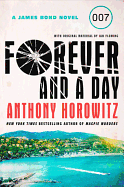
| Publisher: | Harper | |
| Genre: | International Mystery & Crime, Espionage, Mystery & Detective, Thrillers, Fiction, Action & Adventure | |
| ISBN: | 9780062872807 | |
| Pub Date: | November 2018 | |
| Price: | $26.99 |
| Mystery & Thriller |
by Anthony Horowitz
Marseilles, 1950: a British secret agent, the original 007, is found dead, killed by three bullets while investigating the activities of Corsican drug lords. His newly minted successor, James Bond, takes both the number and the responsibility of solving his murder. Novelist and screenwriter Anthony Horowitz (The Word Is Murder; The Magpie Murders) vividly imagines Bond's inaugural assignment, complete with a mysterious woman and enigmatic associates, in his second Bond novel, Forever and a Day.
Horowitz draws on well-established facets of Bond's image: his gambling, his fondness for women and alcohol, his ability to keep a cool head under pressure. This Bond is a bit unsure, though, at least internally: he's a war veteran, but still untested as an agent. His encounters with "Sixtine," a Frenchwoman who makes her living selling information, serve to highlight his inexperience and sharpen his sense of danger.
As he investigates his predecessor's death, Bond (with Sixtine) finds himself probing the local heroin trade, whose supply has suddenly dried up. An American agent working the case gives Bond helpful information, though like most of the characters, he may or may not be what he seems. The narrative slows down at times to provide exposition, though the last several chapters--involving an American tycoon, a sumptuous yacht and a Corsican mobster who speaks only via his translator--barrel along at a breakneck pace. Longtime Bond fans or those who simply enjoy a good thriller will find much to enjoy here, including a martini or two (shaken, not stirred). --Katie Noah Gibson, blogger at Cakes, Tea and Dreams
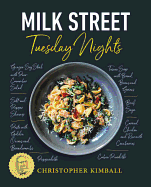
| Publisher: | Little, Brown | |
| Genre: | American - General, Cooking, Individual Chefs & Restaurants, American - New England, Regional & Ethnic, Quick & Easy, Methods | |
| ISBN: | 9780316437318 | |
| Pub Date: | October 2018 | |
| Price: | $35 |
| Food & Wine |
by Christopher Kimball
Christopher Kimball (Christopher Kimball's Milk Street: The New Home Cooking), has created another gorgeous cookbook in Milk Street: Tuesday Nights. Host of the popular magazine and TV show also named Milk Street, he has nailed the answer to the home cook's quotidian question: What's for dinner?
Full of simple recipes that have been tested repeatedly--for which Milk Street is famous--this book is a perfect introduction to delicious meals from around the world. Showcasing dishes like Japan's Chicken Teriyaki Donburi, Garlic and Cilantro Soup (Kimball's take on Portuguese açorda à alentejana) and a Cantonese-inspired Ginger-Scallion Steamed Cod, Milk Street: Tuesday Nights is chock full of gorgeous, full-page pictures, clear instructions and fabulous recipes. Home cooks who trust Kimball's dedication to recipe testing and ingredient sourcing, or who are looking to branch out in their culinary repertoire, will enjoy this lovely cookbook.
Some unusual techniques, such as using whipped cream as the base for the White Pizza with Arugula, lead to fantastic results. When in doubt, trust Kimball and follow his recipes--no matter how many dirtied dishes happen. The results will be gobbled up fast enough to make it all worth while. And with recipes gathered into sections such as "Roast and Simmer," "One Pot" and "Fast," "Faster" and "Fastest," any cook is sure to easily find the perfect recipe for their Tuesday night dinner. Maybe it'll be be vegetarian Peanut-Sesame Noodles, or a decadent Uruguayan-Style Steak and Cheese Sandwich. --Jessica Howard, bookseller at Bookmans, Tucson, Ariz.
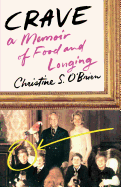
| Publisher: | St. Martin's Press | |
| Genre: | Biography & Autobiography, Women, Personal Memoirs | |
| ISBN: | 9781250128836 | |
| Pub Date: | November 2018 | |
| Price: | $28.99 |
| Biography & Memoir |
by Christine S. O'Brien
Christine O'Brien grew up learning to distrust her body, her desires and her pain. She and her four siblings were beautiful, affluent children in Manhattan, with miserable and often frightening parents. Their father was a successful TV executive and film producer who swung between affection, neglect and rage. Their mother was a Miss America finalist who suffered terrible childhood accidents and never felt entirely well again. The strain of her bad health and failing marriage led her to search for control and perfection in restrictive diets and alternative medicine, first for herself, then for her whole family. Crave is O'Brien's memoir of growing up in this cocktail of love and abuse, and her ongoing struggle to come to terms with its lasting effects.
When O'Brien was a little girl, her family lived in a gloomy formal apartment in the famous Dakota building on Central Park. To escape the city pollution, they moved to Long Island, where her mother discovered a "doctor" who promoted a strict program of juices, puréed salads, raw egg yolks and nuts. Out of strong misdirected love, she raised her four children on this diet, which starved them, isolated them, and taught them disordered eating habits that haunt them into adulthood. There is no perfect resolution. "I have broken the chain of control and rigidity and guilt for my own children. The chain I haven't broken is the one still binding me." In the end, her mother still dominates this memoir, an image of tormented well-intentioned intimidating love, who must never be betrayed. --Sara Catterall

| Publisher: | Harper | |
| Genre: | Southeast Asia, Asia, History, Vietnam War, Military | |
| ISBN: | 9780062405661 | |
| Pub Date: | October 2018 | |
| Price: | $37.50 |
| History |
by Max Hastings
Prominent journalist Max Hastings, author of numerous works of history, including Inferno: The World at War, 1939-1945, takes on perhaps his most ambitious project yet with the nearly 800-page Vietnam: An Epic Tragedy, 1945-1975. The war in Vietnam--and the associated wars in Laos and Cambodia--has generated an enormous body of literature, yet Hastings seeks to distinguish his history by delivering a more balanced account of the pain and suffering inflicted on the Vietnamese people. Hastings notes in his introduction that "the merits of rival causes are never absolute," and his account holds relentlessly to that maxim. Vietnam portrays the French, Americans, North Vietnamese, Vietcong and other major players as equal partners in a three-decade-long disaster.
Starting with the struggle against French colonialism, Hastings shows that communist forces under the initial leadership of Ho Chi Minh found legitimacy in nationalistic struggle among the Vietnamese people and, to a certain extent, on the global stage. However, what later came to be North Vietnam's status as a closed, totalitarian society prevented outsiders from getting a full picture of the privation and cruelty inflicted on its people. While bombing campaigns and atrocities sullied the American cause, the assassinations, terrorism and tortures committed by the Vietcong received much less attention. North Vietnamese leaders conducted the war with vicious disregard for the lives of their soldiers, just as American leaders sacrificed countless lives for the sake of a "decent interval." In Vietnam, Hastings argues, neither side can claim the high ground. --Hank Stephenson, bookseller, Flyleaf Books, Chapel Hill, N.C.
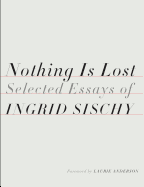
| Publisher: | Knopf | |
| Genre: | Biography & Autobiography, Design, Art, Fashion & Accessories, General, Artists, Architects, Photographers, Essays | |
| ISBN: | 9781524732035 | |
| Pub Date: | November 2018 | |
| Price: | $40 |
| Essays & Criticism |
by Sandra Brant, editor
Nothing Is Lost is a rich sampling of essays by Ingrid Sischy, the renowned editor of Artforum and Interview, a critic of art, fashion and celebrity from the 1980s until her death in 2015. Many of the 35 pieces in this marvelous collection, edited by Sischy's wife, Sandra Brant, were published in the New Yorker, Vanity Fair, the New York Times Magazine and elsewhere. They draw from her interviews with artists, designers and actors, including Alexander McQueen, Jeff Koons, Miuccia Prada, Calvin Klein, Kristen Stewart and Nicole Kidman.
The essays say as much about the eminently discreet and down-to-earth Sischy as they do about her subjects. She was a trusted conduit between her interviewees and the inquisitive public. It's evident in the intimacy of her writing that people opened up to her and let her enter parts of their lives they kept hidden from others. In the case of Nicole Kidman, interviewed not long after her divorce from Tom Cruise, Sischy carved out a safe, nonjudgmental space for Kidman to talk about her imploded marriage, a subject of intense media speculation and gossip.
Photography was Sischy's special love, and one of her most heartfelt essays explores David Goldblatt's visual reminders of the complexities and contradictions of apartheid in South Africa, her country of birth. The world of art, fashion and celebrity moves fast, with people often looking for the next big thing before fully appreciating what is actually in front of them. Sischy's socially conscious, insightful essays are time capsules capturing and preserving significant cultural moments for future generations to savor and enjoy. --Shahina Piyarali, writer and reviewer
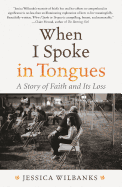
| Publisher: | Beacon Press | |
| Genre: | Biography & Autobiography, Pentecostal & Charismatic, Personal Memoirs, Religious, Religion, Christianity | |
| ISBN: | 9780807092231 | |
| Pub Date: | November 2018 | |
| Price: | $26.95 |
| Religion |
by Jessica Wilbanks
Jessica Wilbanks's early life in rural Maryland was dominated by her family's Pentecostal faith. Each week, she spent hours at church with her parents and brothers, taking careful notes on the pastor's rambling sermons and praying for the Holy Spirit to bless her with the gift of tongues: the ability to speak in an unintelligible "prayer language" known only to God. But even after being baptized, playing an angel in the annual live Nativity scene and countless hours of diligently studying the Bible, Wilbanks came up empty. As a lonely teenager who hungered to know more of the world, she began questioning, then outright rejecting, the faith and the community she'd always known.
In her memoir, When I Spoke in Tongues, Wilbanks chronicles her experience making sense of the faith she'd lost like an outgrown hand-me-down sweater--though it itched and no longer fit, she couldn't quite discard it altogether. As a graduate student in Houston, she became fascinated by the origins of American Pentecostalism and eventually wrangled a research grant to travel to Nigeria and explore the faith's Yoruba influences.
Wilbanks writes with a journalist's keen eye, capturing the loving chaos of her family's house and the fervent, bombastic clamor of revival meetings in both the U.S. and Nigeria. Her compassionate narrative provides a fascinating glimpse into a faith subculture whose popular image is often reduced to arm-waving televangelists. But even more compelling is Wilbanks's honest rendering of the profound uncertainty that comes after leaving behind a place that hasn't changed, but is no longer home. --Katie Noah Gibson, blogger at Cakes, Tea and Dreams

| Publisher: | Plume | |
| Genre: | Biography & Autobiography, Form, Personal Memoirs, Literary Collections, Social Science, Humor, Essays | |
| ISBN: | 9780525534143 | |
| Pub Date: | October 2018 | |
| Price: | $26 |
| Starred | Humor |
by Phoebe Robinson
The title of comedian Phoebe Robinson's second book of essays may sound glib, but she means it seriously: Everything's Trash, but It's Okay. According to Robinson (You Can't Touch My Hair), everyone--nuns, parents, celebrities and the author herself--has ridiculous moments. And between climate change, battles for human rights, the resurgence of neo-Nazis and much more, the problems in the world can feel overwhelming. But, Robinson says, recognizing that everything is trash allows us to see ourselves and the world more clearly. Peppered with tangents, hashtags and footnotes, her essays cover politics, race, dating, body positivity and the two times she met Bono. "Feminism, I Was Rooting for You; We Were All Rooting for You" is a searing call to action for feminism to commit to intersectionality, and explains what Tyra Banks can tell us about black parenting. "LOL. Wut?: An Incomplete List of All the Ways Being a Woman Is Ridic" calls out unreasonable beauty standards and Robinson's firsthand experience of sexual harassment in the comedy world.
If book reviews could be written by text message, this one would be 10 cry-laughing emojis followed by 20 fire emojis. Robinson is an informed and adept cultural critic and her jokes don't dumb down her points; instead, they provide entry into difficult topics. Her book is ultimately hopeful: even if the world is a dumpster fire, there's comfort in knowing that we are all in it together. --Katy Hershberger, freelance writer and bookseller
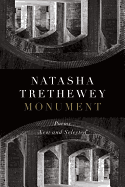
| Publisher: | Houghton Mifflin Harcourt | |
| Genre: | Women Authors, American, Death, Grief, Loss, Poetry, Subjects & Themes, African American | |
| ISBN: | 9781328507846 | |
| Pub Date: | November 2018 | |
| Price: | $26 |
| Poetry |
by Natasha Trethewey
Natasha Trethewey's collection of new and selected poems, Monument, offers a hefty cross-section of the poet's wide-ranging and important work.
The book's six sections pull from previous collections, including the Pulitzer Prize-winning Native Guard. Trethewey is a biracial poet with a profound sense of American history. The poem "Flounder" uses metaphor to introduce a central conflict throughout, the tension between being black and being white: "I stood there watching the fish flip-flop,/ switch sides with every jump." Deftly, Trethewey gives voice to those who exist in the liminal spaces of American culture. She plumbs "their dailiness" with clear, resonant images, creating one indelible portrait after another in a "catalog/ of mixed bloods."
Many of the poems also focus on Trethewey's black mother, who was murdered by her second husband. Confronting the incident in verse seems to offer the poet catharsis. "And how could I not--bathed in the light/ of her wound--find my calling there?" she asks in "Articulation." In the same way she explores race with historical characters, she explores her mother's black family and their place in history. As much as these poems look out into the world, though, some of the best look inward. In "Illumination," the poet brilliantly limns the writing process itself. "Always there is something more to know/ what lingers at the edge of thought/ awaiting illumination," she begins. The poem ends with a white page "silent incendiary waiting."
Monument is a momentous collection that uses verse to enshrine both the historical and deeply personal. It places Trethewey in the pantheon of American poetry. --Scott Neuffer, writer, poet, editor of trampset
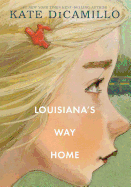
| Publisher: | Candlewick Press | |
| Genre: | Orphans & Foster Homes, Friendship, Family, General, Social Themes, Juvenile Fiction, Multigenerational, Historical | |
| ISBN: | 9780763694630 | |
| Pub Date: | October 2018 | |
| Price: | $16.99 |
| Starred | Children's & Young Adult |
by Kate DiCamillo
Readers who first met Louisiana Elefante in Newbery Medalist Kate DiCamillo's Raymie Nightingale will be thrilled to get to know her better in Louisiana's Way Home. According to the quietly dramatic 12-year-old, this stand-alone middle-grade novel is "a long and tragic story full of dark alleys and twists and turns and many unexpected happenings." Oh, "[a]nd also curses." The curse is one of "sundering," attached to the story of Louisiana's great-grandfather, a "most elegant and deceitful" magician, who in 1910 sawed his wife in half on stage, then walked away, never to return.
Fast forward to 1977. In the wee hours of one fall night, Louisiana's granny, with no explanation, loads Louisiana in the car, sundering her from home and her two best friends, not to mention her cat and Buddy the one-eyed dog. Louisiana is helplessly furious, but when her granny is incapacitated by a terrible toothache, our heroine is suddenly in the driver's seat--literally. The two penniless former Floridians end up in a small town in Georgia, where Louisiana is forced to "use [her] charm" to convince a dentist to tend to Granny's toothache. While her granny recuperates, the ever-resourceful Louisiana roams the town, befriending a boy named Burke Allen and his crow, Clarence. She is determined to find her way back home to Florida, but when her granny disappears, leaving only a letter, Louisiana's entire life boils down to one question: "Who am I?"
DiCamillo's (Flora & Ulysses; The Tale of Despereaux; Because of Winn-Dixie) funny and hugely likable Louisiana has a marvelous way with words and a spirit that will not rest until she finds her way home, wherever that may be. --Emilie Coulter, freelance writer and editor
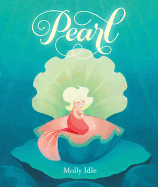
| Publisher: | Little, Brown | |
| Genre: | Animals, Environment, Nature & the Natural World, Marine Life, Mermaids, Juvenile Fiction | |
| ISBN: | 9780316465670 | |
| Pub Date: | October 2018 | |
| Price: | $17.99 |
| Children's & Young Adult |
by Molly Idle
"In the vast sea of blue, some mermaids watched over the waves breaking upon the endless beaches. Some kept an eye on the great coral reefs." Others "tended to the towering forests of kelp rising from the ocean floor," or "guarded the giants of the deep." Pearl, a very young mermaid, yearns to have a job as important as these. But when she asks her mother what she can do to help, her mother gives her a single grain of sand to care for. One grain of sand, among all the billions? Pearl is baffled that a single grain of sand could be considered important, but her wise mother tells her, "The smallest of things can make a great difference." Disappointed, Pearl weeps and grows angry. Then, she notices a "faint light" coming from the grain... She follows through with her responsibility and is soon giving the tiny speck her full attention, protecting, polishing and even playing with it. And the grain responds by beginning to glow with a beautiful luster, growing into something Pearl--and the readers of her eponymous picture book--could never have anticipated.
In her lush and charming Pearl, Molly Idle, author and illustrator of Flora and the Peacocks, Flora and the Penguin and the Caldecott-winning Flora and the Flamingo, brings to life yet another enormously appealing protagonist. Idle's dreamy, colored-pencil illustrations evoke the watery deep in magical hues of blue and green. The lyrical language reveals a message of perseverance in the face of disappointment and frustration--a lesson from which all young mer-children may benefit. --Emilie Coulter, freelance writer and editor
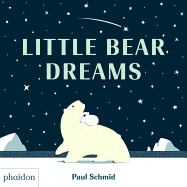
| Publisher: | Phaidon Press | |
| Genre: | Polar Regions, People & Places, Animals, Bedtime & Dreams, Juvenile Fiction, Bears | |
| ISBN: | 9780714877242 | |
| Pub Date: | October 2018 | |
| Price: | $17.95 |
| Children's & Young Adult |
by Paul Schmid
"Of what do little bears dream? Bright snowflakes, perhaps... or dark starry nights." The first double-page spread of Little Bear Dreams shows the titular little bear astride a parent, tongue out, trying to catch one of the intricately shaped snowflakes falling around the pair. With the page turn, the reader is shown a vast sky sprinkled with shining stars, the little bear's nose peeking out from behind the big bear. Of what else does a little bear dream? Well, "[h]ot chocolate... cold pizza," "straight horizons... and curly moustaches," of course. Each dream vision is accompanied by an illustration depicting the little bear enjoying it: a tiny polar bear mouth covered in chocolate; the cub licking his lips at the sight of pizza; parent and child staring out at the flat horizon; and little bear sporting a giant, handlebar moustache. The dreams don't end with facial hair: the little bear hides underneath the parent for "[h]ide-and-seek"; nuzzles noses, showing "[b]ig love"; and sniffs at a bunch of bunnies, identified as "small friends."
With only a handful of words, Paul Schmid's (Oliver and His Alligator) creative "opposites" picture book is silly, fun and surprisingly tender. Schmid's color palette is limited--featuring a few shades of blue, white and off-white with pops of color for the little bear's dreams--but his illustrations feel expansive, depicting vast landscapes and adorable close-up, little bear "short tails." Little Bear Dreams is a perfect read for "frosty" nights and tucking into "[s]oft, snowy beds." --Siân Gaetano, children's and YA editor, Shelf Awareness